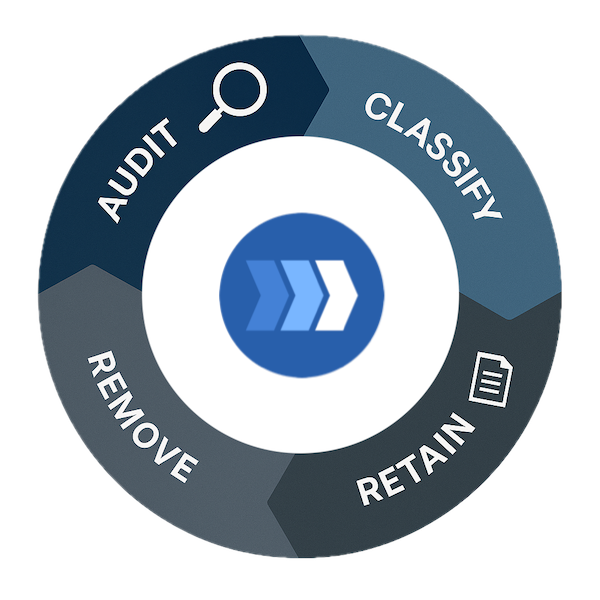Cleaner data. Smarter AI. Lower costs. Better ROI.
Automate content lifecycle across Confluence & Jira to uphold ISO/SOC 2 and compliance needs while cutting AI brain-rot and token + indexed object overages and unnecessary backup growth.
The modern data problems that can be solved quickly and efficiently
The good news is that a modern data retention strategy can resolve the issues that arise, quickly and efficiently.
The key outcomes of modern data retention strategy
- Regulatory assurance: Automate and meet ISO/SOC2 expectations with audit‑ready logs and defensible deletion.
- AI hygiene: Reduce model drift and costs, increase AI ROI by keeping training/RAG context clean and current.
- Risk reduction: Shrink discovery scopes and breach surface areas by eliminating expired/ownerless content.
- Cost efficiency: Cut backup and indexed‑object growth with double‑digit volume reductions.
- Operational performance: Improve Confluence and Jira responsiveness and shorten maintenance windows.
How Content Retention Manager solves it
Opus Guard's Content Retention Manager implements data retention strategy for high tech/high value IP, with ease.
Automate retention policies
Define and automate time- and event-based rules for spaces and projects (e.g., 7 years after product EOL), with archive-before-delete if required.Delegate governance
Set up any number of groups of trained content admins, and content owners who know the content best to make retention decisions, and perform reviews or holds before any actual deletion of content.Discover, audit, classify, report
Immutable, exportable proof of deletion & policy alignment for any examiners – legal or audit.
Control → Practice in Atlassian source → Opus Guard feature → Export evidence for audit‑ready reviews.

Accelerate AI ROI
Clear away outdated content at the source so Rovo and other AI's stay clean, fast, accurate, and trustworthy.Classification blueprints aligned to ISO/SOC/privacy frameworks
Limitless array of hierarchical content classification types and retention policies.Built for high-tech compliance
SOC 2, ISO 27001 & ISO 42001 (AI governance)alignment for dataset lineage, minimization, and exportable evidence trails.Least-privilege principles
Scoped to Confluence & Jira permissions with auditable access, no off‑platform data stores.
Content Retention Manager walkthrough
FAQ's
How does data retention reduce risk during ISO / SOC 2 audits?
Can we prove that expired content was deleted in accordance with policy?
How does data retention affect our AI and analytics initiatives?
What’s the business impact on storage and backup costs?
How does Opus Guard fit in our existing information governance program?
Which fields are included in exports for reviews and audits?
Does this help Rovo and Glean?

Easy content governance
Content Retention Manager is your vital tool to oversee and execute the document lifecycle, ensuring that information is stored, maintained, and disposed of in a compliant focused manner and according to your defined retention policies.
"Love it. I've always wondered why this wasn't a feature in Confluence and now I found a way to get it!"
Opus Guard is your trusted retention partner
Opus Guard is SOC 2 Type II certified. And built entirely on Atlassian's own SOC 2 certified infrastructure. We regularly conduct tests and audits, subject to our controls.

Runs on Atlassian is a special category of apps in the Atlassian Marketplace that are built on Atlassian Forge. These apps • Are hosted on Atlassian’s platform • Store data within Atlassian • Are data residency compliant

Atlassian Cloud Fortified apps offer additional security, reliability, and support through: • Cloud security participation • Timely reliability checks • 24hr support response time, and more: verified by Atlassian
Data Residency & Privacy
Supports Atlassian data residency. Aligns to GDPR/CCPA principles of data minimization and storage limitation—no off-platform copies.
Defensible Deletion & Evidence
Policy-driven archival and deletion with exportable audit logs for regulatory reviews.
Least-Privilege by Design
Scopes limited to the minimum required to classify, audit, archive, and delete in Confluence & Jira.
ISO Alignment
Governance aligned with ISO 27001 (information security) and ISO 42001 (AI governance) practices.


